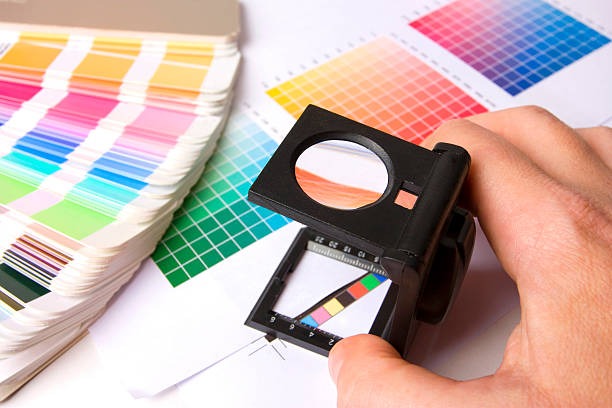
TEXTILE TEST AND ANALYSES
Textile tests and analyses are various procedures carried out to evaluate the quality, performance, safety, and compliance with legal regulations of textile materials and products. These tests can be applied throughout the entire production chain, from raw material (fiber) to finished product (garment, home textile, etc.), and play an important role in the textile industry.
Textile tests and analyses can generally be categorized as follows:
1. Fiber Testing:
Fiber Identification: Determining the type of fiber used in textile products (cotton, wool, polyester, etc.) using methods such as microscopy, burning tests, and solubility tests.
Fiber Length Measurement: Determining the average length and length distribution of the fiber.
Fiber Fineness Measurement: Determining the fineness of the fiber (in microns).
Tensile Strength and Elongation Test: Measuring the breaking strength of the fiber and the amount of elongation at break.
Moisture Content Determination: Determining the amount of moisture in the fiber.
2. Yarn Testing:
Yarn Count Determination: Determining the weight of yarn per unit length or the length of yarn per unit weight (expressed in units such as Nm, Tex, Denier).
Twist Determination: Determining the number of twists per unit length of the yarn.
Tensile Strength and Elongation Test: Measuring the breaking strength of the yarn and the amount of elongation at break.
Unevenness Test: Determining the thickness variations along the yarn and yarn defects (neps, thick places, thin places).
Friction Test: Determining the coefficient of friction of the yarn.
3. Fabric Testing:
Weight per Unit Area (Grammage) Determination: Determining the weight of fabric per unit area (in g/m²).
Weave Density Determination: Determining the density of warp and weft yarns in the fabric.
Strength Tests:
Tensile Strength: Measures the fabric's resistance to breaking under tension.
Tear Strength: Measures the fabric's resistance to tearing.
Bursting Strength: Measures the fabric's resistance to multidirectional stress (especially important for knitted fabrics).
Abrasion Resistance Test: Measuring the fabric's resistance to surface wear caused by rubbing.
Pilling Test: Evaluating the fabric's resistance to the formation of pills (small balls of fuzz) on the surface.
Dimensional Stability Test: Determining the change in fabric dimensions (shrinkage, twisting) after washing, drying, etc.
Colorfastness Tests: Measuring the fabric's color resistance to factors such as washing, rubbing, light, and perspiration.
Wash Fastness: Resistance of the color to washing.
Rubbing Fastness (Dry and Wet): Resistance of the color to dry and wet rubbing.
Light Fastness: Resistance of the color to light (sunlight).
Perspiration Fastness: Resistance of the color to perspiration.
Water Permeability/Water Repellency Tests: Evaluating the fabric's ability to pass or repel water.
Air Permeability Test: Measuring the fabric's air permeability.
Flammability Test: Determining the fabric's flammability and burning characteristics.
Chemical Composition Analysis: Identifying and quantifying the dyes, finishing agents, and other chemicals used in the fabric.
4. Finished Product Testing:
Appearance Evaluation: Examining the seam quality, accessory control, and overall appearance.
Functional Tests: Testing the functionality of accessories such as zippers, snaps, and buttons in garments.
Performance Tests: Evaluating properties such as moisture management and UV protection in sportswear.
Safety Tests: Checking for small parts, sharp edges, and harmful chemicals that may pose a hazard, especially in baby and children's clothing.
Label Information Verification: Checking the accuracy of the information on the product label and its compliance with legal requirements.


Your Reliable and Comprehensive Solution Partner in Textile Testing: Why Kompass Europe?
In the textile industry, success depends on quality, performance, and safety. As consumer expectations rise, legal regulations are also becoming stricter. In this dynamic environment, choosing the right laboratory for textile testing and analysis is the key to your success.
Comprehensive Test Range and Deep Expertise
Latest Technology and International Standards
Fast, Reliable, and Traceable Results
Customer-Focused Approach and Customized Solutions
Confidentiality and Reliability
Continuous Support and Consulting
Contact Us for Your Textile Testing and Analysis.
We offer affordable and effective solutions tailored to your needs.
The information presented on this website does not constitute legal advice and is intended for informational purposes only. KompassEurope.com.tr assumes no responsibility for any errors or omissions in the information contained on this website. Any decisions made or actions taken by the reader based on this information are solely at the reader's own risk, and KompassEurope.com.tr shall not be held liable for any legal consequences arising from such decisions or actions. Readers are strongly advised to seek professional legal counsel regarding their specific circumstances and concerns.
© 2025 Kompass Europe. All rights reserved. The contents of this website belong to Kompass Europe and are protected by copyright laws. Copying, publishing, distributing or any commercial use of the information on the website is possible only with written permission. By using this site, you agree to our Terms of Use and Privacy Policy.
